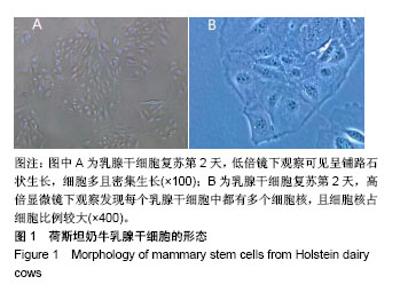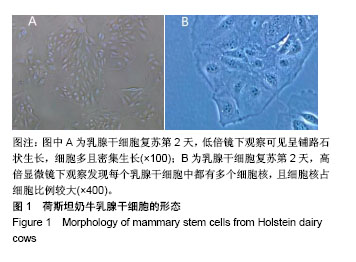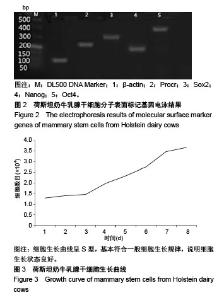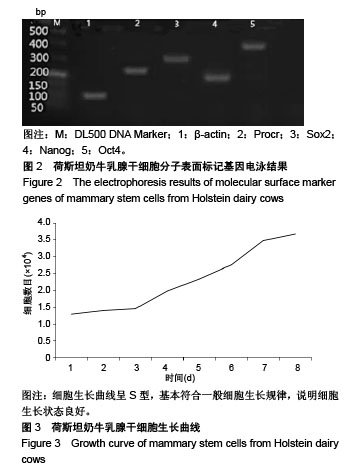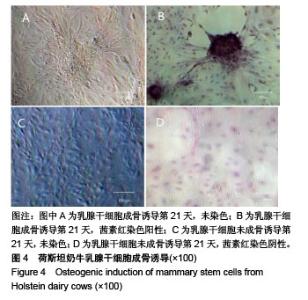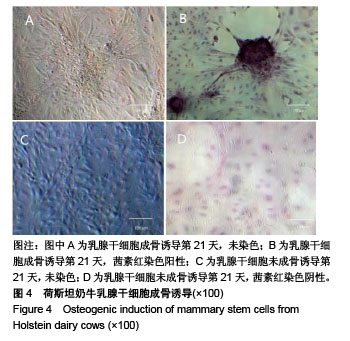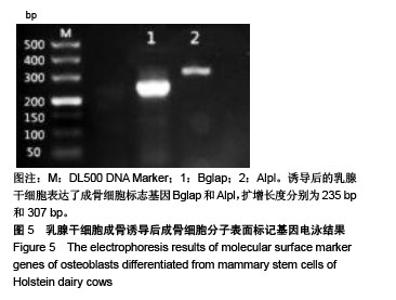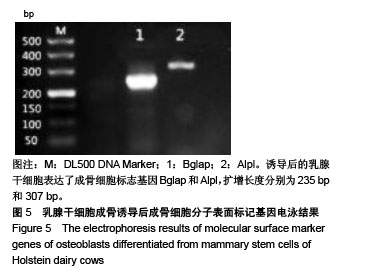| [1] Ito K, Suda T. Metabolic requirements for the maintenance of self-renewing stem cells. Nat Rev Mol Cell Biol. 2014;15(4):243-256.[2] Deome KB, Faulkin LJ Jr, Bern HA, et al. Development of mammary tumors from hyperplastic alveolar nodules transplanted into gland-free mammary fat pads of female C3H mice. Cancer Res. 1959;19(5): 515-520.[3] Shackleton M, Vaillant F, Simpson KJ, et al. Generation of a functional mammary gland from a single stem cell. Nature. 2006;439(7072):84-88.[4] Inman JL, Robertson C, Mott JD, et al. Mammary gland development: cell fate specification, stem cells and the microenvironment. Development. 2015;142(6):1028-1042.[5] Dey D, Saxena M, Paranjape AN, et al. Phenotypic and functional characterization of human mammary stem/progenitor cells in long term culture. PLoS One. 2009;4(4):e5329.[6] 王代松,蔡车国,董小兵,等.多潜能乳腺干细胞的发现[J].中国细胞生物学学报,2015,37(1):1-5.[7] Bai L, Rohrschneider LR. s-SHIP promoter expression marks activated stem cells in developing mouse mammary tissue. Genes Dev. 2010; 24(17):1882-1892.[8] Amoh Y, Li L, Campillo R, et al. Implanted hair follicle stem cells form Schwann cells that support repair of severed peripheral nerves. Proc Natl Acad Sci U S A. 2005;102(49):17734-17738.[9] Visvader JE. Keeping abreast of the mammary epithelial hierarchy and breast tumorigenesis. Genes Dev. 2009;23(22):2563-2577.[10] Richert MM, Schwertfeger KL, Ryder JW, et al. An atlas of mouse mammary gland development. J Mammary Gland Biol Neoplasia. 2000;5(2):227-241.[11] Watson CJ, Khaled WT. Mammary development in the embryo and adult: a journey of morphogenesis and commitment. Development. 2008; 135(6):995-1003.[12] Smalley MJ. Isolation, culture and analysis of mouse mammary epithelial cells. Methods Mol Biol. 2010;633:139-170.[13] 李庆章. 奶牛乳腺发育与泌乳生物学[M]. 北京:科学出版社, 2014: 20-616.[14] Jolicoeur F, Seemayer TA, Gabbiani G, et al. Multifocal, nascent, and invasive myoepithelial carcinoma (malignant myoepithelioma) of the breast: an immunohistochemical and ultrastructural study. Int J Surg Pathol. 2002;10(4):281-291.[15] Sopel M. The myoepithelial cell: its role in normal mammary glands and breast cancer. Folia Morphol (Warsz). 2010;69(1):1-14.[16] Capuco AV, Choudhary RK, Daniels KM, et al. Bovine mammary stem cells: cell biology meets production agriculture. Animal. 2012;6(3):382-393.[17] 李吉霞,葛秀国,郭宏,等. 牛乳腺干细胞的分离和生物学特征[J]. 西北农业学报, 2013, 22(6):1-5.[18] Stingl J, Eirew P, Ricketson I, et al. Purification and unique properties of mammary epithelial stem cells. Nature. 2006;439(7079):993-997.[19] Fridriksdottir AJ, Petersen OW, Rønnov-Jessen L. Mammary gland stem cells: current status and future challenges. Int J Dev Biol. 2011;55(7-9): 719-729.[20] 李连宏, Xiao Gary Guishan, 张众,等. 乳腺干细胞研究及其再生医学[J]. 临床与实验病理学杂志, 2013, 29(9): 933-937.[21] Park BW, Kang EJ, Byun JH, et al. In vitro and in vivo osteogenesis of human mesenchymal stem cells derived from skin, bone marrow and dental follicle tissues. Differentiation. 2012;83(5):249-259.[22] Cai R, Nakamoto T, Hoshiba T, et al. Matrices secreted during simultaneous osteogenesis and adipogenesis of mesenchymal stem cells affect stem cells differentiation. Acta Biomater. 2016;35:185-193.[23] Ehnes DD, Price FD, Shrive NG, et al. Embryonic stem cell-derived osteocytes are capable of responding to mechanical oscillatory hydrostatic pressure. J Biomech. 2015;48(10):1915-1921.[24] 李帅民. 荷斯坦奶牛乳腺来源干细胞的初步分离及鉴定[D]. 呼和浩特:内蒙古农业大学, 2014.[25] Petersen OW, Polyak K. Stem cells in the human breast. Cold Spring Harb Perspect Biol. 2010;2(5):a003160.[26] 宋嘉哲,李宁,薛恺.动物乳腺干细胞的研究进展[J].中国畜牧兽医, 2011, 40(11):110-114. [27] Kordon EC, Smith GH. An entire functional mammary gland may comprise the progeny from a single cell. Development. 1998;125(10):1921-1930.[28] Shackleton M, Vaillant F, Simpson KJ, et al. Generation of a functional mammary gland from a single stem cell. Nature. 2006;439(7072):84-88.[29] Spike BT, Engle DD, Lin JC, et al. A mammary stem cell population identified and characterized in late embryogenesis reveals similarities to human breast cancer. Cell Stem Cell. 2012;10(2):183-197.[30] Wansbury O, Mackay A, Kogata N, et al. Transcriptome analysis of embryonic mammary cells reveals insights into mammary lineage establishment. Breast Cancer Res. 2011;13(4):R79.[31] 李吉霞,葛秀国,刘新峰,等. 乳腺干细胞自我更新相关信号通路研究进展[J]. 天津农学院学报, 2013, 20(1): 41-45.[32] Capuco AV, Choudhary RK, Daniels KM, et al. Bovine mammary stem cells: cell biology meets production agriculture. Animal. 2012;6(3):382-393.[33] Hong D, Chen HX, Ge RS, et al. The biological roles of extracellular and intracytoplasmic glucocorticoids in skeletal cells. J Steroid Biochem Mol Biol. 2008;111(3-5):164-170.[34] 雷栓虎,岳海源,汪静,等.骨髓间充质干细胞诱导分化成骨方法的研究与进展[J].中国组织工程研究,2013,17(6):1101-1106.[35] 刘迎春,陈钰萌,韩哲先,等. 荷斯坦奶牛乳腺干细胞的成神经诱导鉴定及催乳素对其增殖活性的影响[J]. 畜牧兽医学报, 2018, 49(3):542-548.[36] 韩哲先,陈钰萌,刘迎春,等. 荷斯坦奶牛乳腺干细胞的成脂诱导及鉴定[J]. 黑龙江畜牧兽医, 2018(15): 87-88,93,240. |
